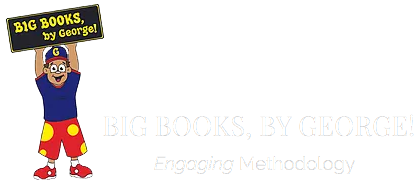Enriching Story Time: Harnessing the Power of Big Books in Children's Education
Welcome to our exploration of a simple, yet profoundly effective tool in children’s education: the “big book”. Often overlooked, these large-sized storybooks hold a unique place in the realm of early learning and literacy development. This blog post delves into the art of utilizing big books to their fullest potential. Whether you’re a teacher, parent, or caregiver, you’ll discover strategies and insights to make story time not just a routine, but an impactful experience for young minds. Let’s unlock the secrets behind these captivating educational resources and learn how to maximize their benefits in a world increasingly dominated by digital distractions.
Enhancing Engagement Through Visual Appeal
One of the most striking features of big books is their size. This isn’t just for show. The large, vivid illustrations in a big book of children’s stories are more than mere decorations; they’re powerful engagement tools. Young children, with their developing visual skills, are naturally drawn to these larger-than-life images. They not only capture attention but also stimulate the imagination. When reading from a big book, point out the details in the pictures. Ask questions about the colors, characters, and scenes. This interaction not only makes the story more engaging but also enhances comprehension and vocabulary development.
Promoting Interactive Learning
Big books aren’t just for reading; they’re for experiencing. Each big book of children’s stories is a platform for interaction. The size of the book makes it ideal for group settings, like a classroom or family reading time. Encourage children to take turns turning the pages. This simple act gives them a sense of involvement and control over the story. Ask open-ended questions about the plot and characters. This not only develops critical thinking skills but also encourages children to express their thoughts and feelings. Through this interactive approach, big books become more than a reading exercise; they transform into a tool for social and emotional learning.
Building Fundamental Literacy Skills
The big book of children’s stories is a cornerstone in building fundamental literacy skills. The large print and simple sentence structures are perfect for early readers. They can follow along as you read, pointing to words and recognizing familiar ones. This helps in developing word recognition and phonemic awareness, which are crucial in the journey to becoming an independent reader. Additionally, the repetitive and rhythmic nature of many big book stories aids in memorization and language development. This repetition reinforces vocabulary and sentence structure, making it easier for children to understand and use new words in their speech. For more details visit us at https://www.bbbg.org/.
Fostering a Love for Reading
A key benefit of using a big book of children’s stories is its ability to foster a love for reading. For many children, these books are their first introduction to the world of literature. The captivating illustrations and engaging narratives create a sense of wonder and excitement about reading. To maximize this effect, choose stories that resonate with the children’s interests and experiences. Make reading a big book an event, something they look forward to. Use different voices for characters, add sound effects, and involve children in storytelling. This approach not only makes reading fun but also instills a lifelong appreciation for books and learning.
Encouraging Group Participation and Social Skills
Big books naturally lend themselves to group activities, making them excellent for teaching social skills. The big book of children’s stories can be a focal point for group discussions, shared reading, and collaborative storytelling. Encourage children to take turns reading aloud, ask them to predict what might happen next, or have them act out parts of the story. This group participation not only improves reading and comprehension skills but also teaches important social skills like listening, taking turns, and respecting others’ opinions. In this way, big books go beyond the realms of literacy, contributing to the overall social and emotional development of children.
Integrating Big Books into Various Learning Scenarios
The big book of children’s stories is not just a tool for reading time; its uses are manifold. These books can be integrated into various learning scenarios to enhance understanding of other subjects. For example, a story about animals can complement a science lesson, or a book with a cultural setting can be a gateway to social studies. Teachers and parents can create activities based on the themes, characters, or settings of the stories, making learning more cohesive and contextual. This integration helps children see the connection between literature and the world around them, enhancing their overall learning experience.
Conclusion
In conclusion, the big book of children’s stories is more than just an oversized book. It’s a gateway to a world of learning and discovery. By enhancing engagement through visuals, promoting interactive learning, building fundamental literacy skills, fostering a love for reading, encouraging group participation, and integrating into various learning scenarios, big books play a crucial role in children’s early education. They are not only a tool for teaching reading but also a medium for nurturing imagination, curiosity, and a love for learning. As we embrace these enchanting tools, we open doors to a more engaging, interactive, and effective learning experience for our young readers.
Read More:
Big Books for Kids
